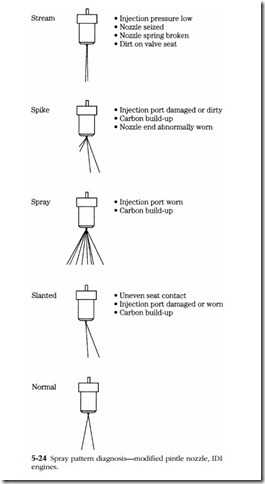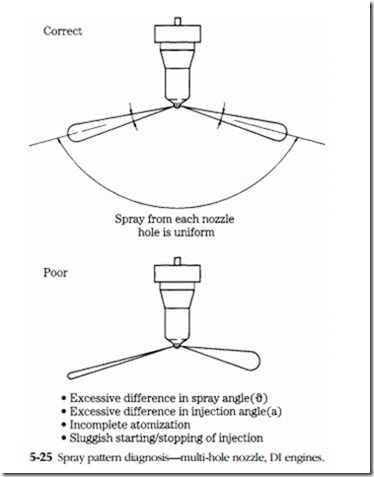Timers
Moving fuel through an open injector requires time and, once injected, additional time is needed for the fuel to ignite. As engine speeds increase, less time is available to accommodate these delays, and the start of injection must occur earlier.
The drawing back at Fig. 5-10 shows the VE hydraulic timer in cross-section. Pressure developed by the feed pump rises in an almost linear fashion with engine speed. As pressure increases, the piston moves to the right, compressing its return spring. A roller transfers this motion to the drive cam, turning it few degrees against direction of shaft rotation.
Mechanical timers are similar to SI advance mechanisms, in that they employ centrifugal weights to sense engine speed and advance the cam (Fig. 5-27). Spring tension on the weights determines the cut-in speed and shims fix the travel limit.
To check timer operation, connect a timing light to an injector pipe and run the engine up to speed. Injection should advance smoothly without hesitation as the rack is extended. Specifications vary, but most applications require 5–7.5° of total advance.
Diaphragm controls
Injector pumps often include a diaphragm-operated control that reduces fuel delivery at high altitudes and/or increases fuel at wide throttle angles for tur- bocharged applications. Diaphragms are tested with a vacuum gauge.

